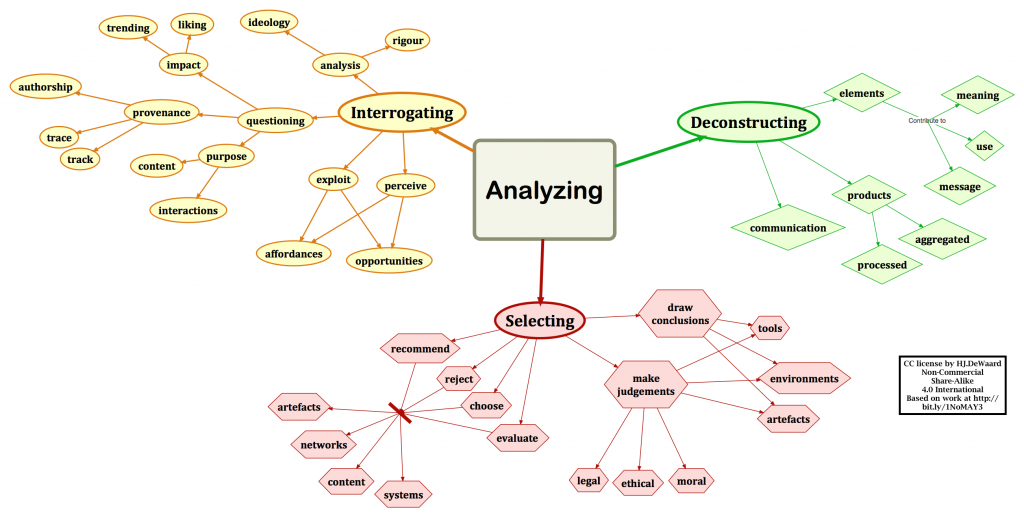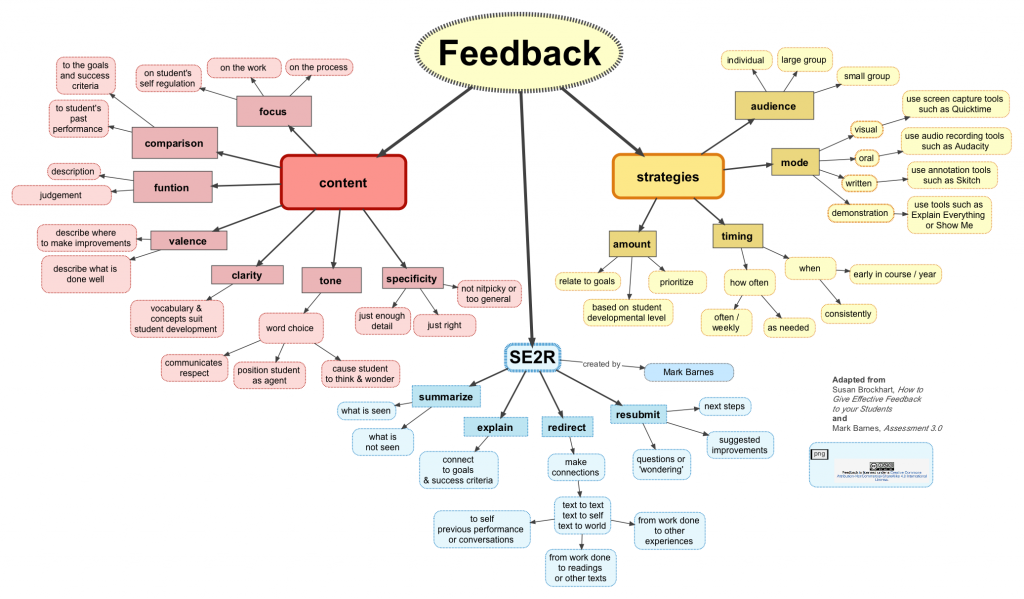Hook: Choice and Voice
This week we’ll take time to analyze, interrogate, deconstruct and select a variety of digital teaching resources for future use in classroom instruction and professional learning. You will explore some choices and develop your ‘digital voice’ with a critical lens. Just as the below video reminds us, an abundance of digital tools in education requires critical analysis and interrogation in order to make appropriate and verifiable choices in digital spaces.
At the end of this week, you will be able to:
- deconstruct and analyze web resources for the purpose of curating for teaching
- criticize and prioritize web searches using a focused approach to minimize distraction and maximize efficiency
- select and rate digital tools and resources for personal and professional purposes by curriculum area, age/grade appropriateness and affordances for ALL learners
- examine ownership and authorship of web resources for students using and applying critical digital literacies
- analyze and interrogate inquiry projects
Direct Instruction
In week six, you examined one curation tool – Cube for Teachers. This week you’ll analyze and curate a small collection of resources as a way of sharing your digital ‘voice’. Select and interrogate resources that are relevant to your teaching practice, along with related references and links. Consider how these resources will help you teach a specific topic or apply technology to benefit student learning outcomes. Here, we’ll focus on ONE curation tool (Cube for Teachers) and one curricular area (your choice) to help make this week’s activity meaningful and purposeful. While there are many other digital curation tools available (e.g. Pinterest), we will focus on using Cube for Teachers as a curation tool. You can also add your selections to a collaborative folder for this course.

Thinking deeply about choice and voice
- Hinrichsen & Coombs Section on Analyzing and Figure 4
- You can add to our collaborative annotations using Hypothes.is. If you do this, you can substitute this for the D2L discussion forum response. The choice is yours.
- SCAN: Kathy Schlock’s Guide to Everything – Critical Evaluation of Information
- Listen to the embedded recorded podcast created by one group of students from last year’s 3516 Course work and posted to Soundcloud to deepen your understanding of meaning making as a digital literacy.
- Consider the readings, video and audio recordings. Review the prompting questions below. Post a response in the D2L discussion forum. Then respond to ONE post in D2L.
When have you deconstructed digital resources and critically interrogated affordances before selecting to engage with that particular tool? (e.g. “I had reservations about using Pinterest because of a bias on my part about how I thought this resource was used by educators. Once I saw the ease of use and ability to collaborate, collect resources with others, I have become a more active Pinterest user.”)
What did you learn from this process about your biases, needs, interests or concerns when starting to use a new digital resource?
How can you teach students to critically analyze their use of digital resources from your particular teaching position – grade level, subject, focus of study?
Guided Practice: Analyzing digital resources
Thinking critically about where you retrieve and curate digital resources will also shape your digital ‘voice’. For example, my choice to not use or share resources found on Teachers Pay Teachers is my own, based on my beliefs about teaching. My belief in sharing resources I’ve created using a Creative Commons license is another choice I’ve made. You will also need to make difficult decisions when creating and sharing resources as an educator. Each decision you make, shapes your digital ‘voice’.
Let’s begin by examining collections of resources. As you search through these curated collections, find FIVE to save and share in Cube for Teachers. Use these curated repositories of digital resources to explore and tinker with tools you’ve tried before, or examine tools you’ve never seen before. The digital landscape is full of potentially powerful tools to use with students, but a critical stance is required to ensure the tools will improve and support student learning. Scan through the collections linked here.
WARNING: One thing to remember is that many school districts in Ontario and Canada have protocols and procedures for the use of ‘third-party’ digital resources so many of the ones you will examine may not be applicable to your teaching practice when working with students.
The 101 hottest ed tech tools for teachers (updated Feb 2020)
This annotated list of 101 educational technology tools and resources is not specifically categorized by efficacy or usability. Your critical analysis is still required. This list relies on the feedback of some edu-influencers you may be interested in following. This list may introduce you to some tools you’d like to explore further.
Top 200 Tools for Personal & Professional Learning 2020
- List view with current ranking for the top 200 digital tools and changes from 2019 ranking.
- Lists of top 100 tools for personal learning, workplace learning, and education.
- List of all digital tools from A to Z from 2014 to 2020.
- List of digital tools based on their categories.
ICT tools for Schools, Teachers and Educators – Mindomo Map
As you collect these digital resources, lets review what Cube for Teachers can do for you as an educator.
Actions
- Curate a collection of FIVE digital resources you hope to use in your teaching. Use your Cube for Teachers account to save and collect resources, and connect with classmates in the Cube. Add the hashtag #3516CDL so we can search for our collected resources. You can also share them in our class folder.
- Make sure you have Connected with your instructor (H DeWaard) in Cube for Teachers. You can also connect with Susan Kwiecien in the Cube.
Participate in the second of the two required Zoom video chats for this course. Connect with some of your classmates. There will be choice(s) in the time(s) you can join. Link and details will be announced in D2L.
Independent Practice: Inquiry Project
At the end of this week you will share your inquiry projects with your instructor and a small group of your classmates.
- submit your inquiry project – summary and link in D2L
- Share your project link in your Google Chat group.
- Connect with your group in Google Chat room to plan for next week – if you wish to gather together to provide feedback using a Zoom or Google Meet video chat, this will need to be planned and organized.
As part of your commitment to collaboration and learning, please provide ‘awesome’ feedback to your group-mates by using models of effective feedback that you’ve used as a teacher. Review the ‘awesome feedback’ infographic from week three. Review the concept map below to extend your understanding of the importance of feedback in teaching and learning.

Wrap Up
As you consider the tasks for this week, take a moment to review the grade grid to track and monitor your progress. Consider your own critical decisions in the choices you are making in this course. Your engaged learning with the content, collaborations with others, and talking about digital technologies is hopefully extending beyond and outside of this course.
Supplementary Resources
- Common Sense Media – Best tools for virtual and distance learning
- Cult of Pedagogy (Jennifer Gonzalvez) – 6 Ed Tech Tools to try in 2020